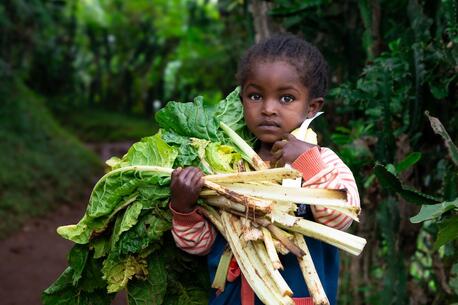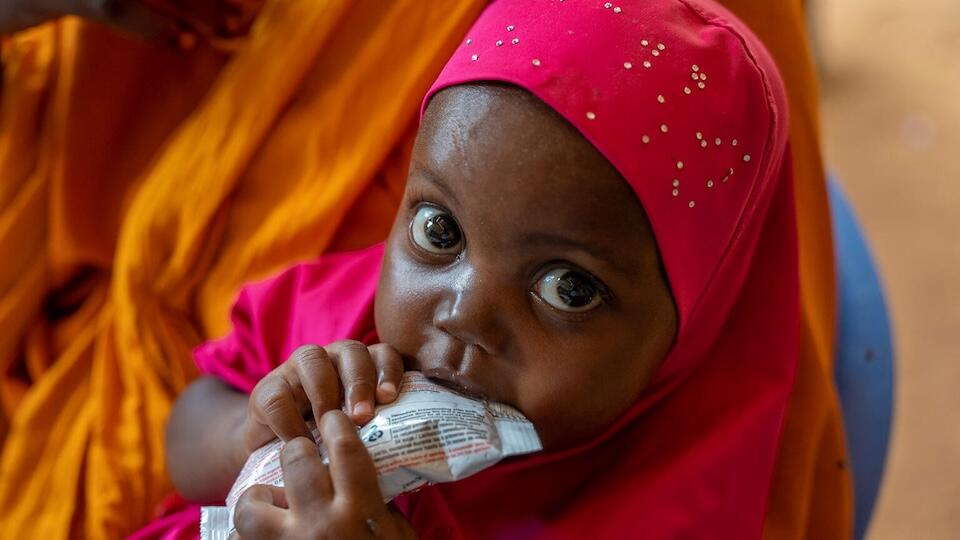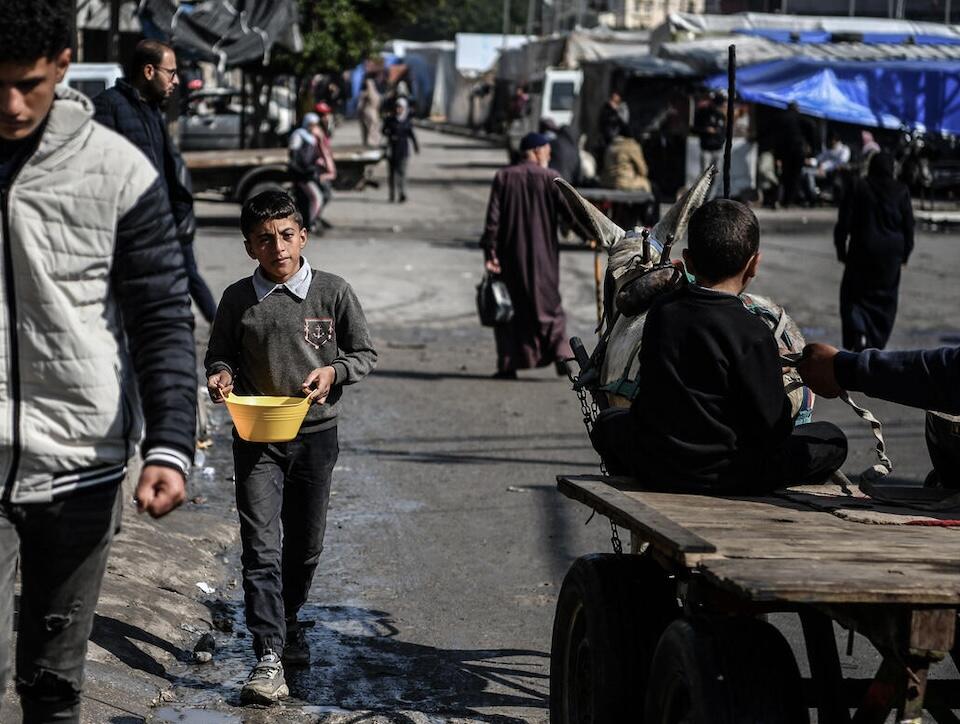
UNICEF Report: Child Food Poverty
1 in 4 young children globally live in severe food poverty due to inequity, conflict and climate crises — 181 million children deprived of their right to grow, develop and learn, and who risk falling into a cycle of poverty and malnutrition, with lasting consequences. In a new report, UNICEF analyzes the latest data and calls for action.
Millions of children are not getting enough nutrition for optimal growth and development
No child should be denied their right to good food and nutrition. Yet growing inequities, conflict, climate crises and rising food prices – combined with the overabundance of unhealthy foods, harmful food marketing strategies and poor child feeding practices – are condemning millions of children to severe child food poverty in early childhood, according to a new UNICEF report.
In Child Food Poverty: Nutrition Deprivation in Early Childhood, UNICEF warns that 181 million children in the world — about 1 in 4 children — are living in severe child food poverty, making them more likely to suffer from life-threatening forms of child malnutrition (wasting) and threatening their growth and brain development.
The report is a first-of-its-kind analysis of the impacts and causes of dietary deprivation among the world’s youngest people in nearly 100 countries and across income groups. It includes a call to action for governments and other partners to transform food, health and social protection systems so children can access diverse and nutritious diets and reach their full potential.
What is food poverty?
Food poverty for children means they are accessing and consuming fewer than five recommended food groups. Those fed two or fewer food groups are in severe child food poverty; those fed three or four food groups are living in moderate child food poverty.
Two-thirds — 68 percent — of children living in severe child food poverty live in South Asia and sub-Saharan Africa, mostly in these 20 countries: Afghanistan, Bangladesh, China, Côte d’Ivoire, the Democratic Republic of the Congo (DRC), Egypt, Ethiopia, Ghana, India, Indonesia, Myanmar, Niger, Nigeria, Pakistan, the Philippines, Somalia, South Africa, Uganda, Tanzania and Yemen.
Globally, the report notes, progress towards ending severe child food poverty has been slow, while conflict, climatic shocks and economic crises are intensifying the problem, especially in fragile settings. The level of severe child food poverty in the Gaza Strip, for example, is 90 percent.
In Somalia, a country experiencing conflict, drought and floods, 63 percent of children are living in severe child food poverty, and in the most vulnerable communities, over 80 percent of caregivers reported that their child had been unable to eat for an entire day.
One positive trend: In West and Central Africa, severe child food poverty fell by one quarter, from 42 percent to 32 percent — with significant reductions found in 1 of every 3 countries with trend data.
Burkina Faso and Nepal have both reduced their prevalence by half; Rwanda by one-third. And Peru has maintained a rate below 5 percent since 2014.

What does child food poverty look like?
Children living in severe child food poverty miss out on many nutrient-rich foods needed for healthy growth and development, while unhealthy, ultra-processed foods are embedded in their diets: 4 out of 5 are fed only breastmilk and/or dairy products and/or a starchy staple, such as rice, maize or wheat. Less than 10 percent are fed fruits and vegetables and less than 5 percent are fed eggs, meat, poultry and/or fish.
The report also found that unhealthy foods and beverages are displacing more nutritious foods from their diets. In Nepal, for example, 42 percent of children living in severe child food poverty consume foods high in sugar, salt and/or fat, and 17 percent consume sweet beverages.
It is not just the poor who are affected, the report shows. An estimated that 97 million, or 54 percent, of children living in severe child food poverty belong to households are from middle and upper middle income households.
What drives child food poverty in early childhood?
The three main drivers of severe child food poverty are poor food environments, poor feeding practices and household income poverty. All stem from failures in food, health and social protection systems.
Poor food environments are disrupting access to nutritious and diverse diets because food systems are failing to provide children with the diets they need for healthy growth and development. Shops and markets are flooded with aggressively marketed ultra-processed foods, and that are high in sugar, salt and unhealthy fats. At the same time, food systems are not providing families and young children with adequate access to affordable, nutritious and diverse foods.
Poor feeding and care practices are undermining young children’s diets because health systems are failing to provide families with the essential nutrition services young children need. In particular, parents, families and communities have insufficient access to timely and quality information, counselling and support on child feeding.
Household income poverty means that families cannot afford nutritious and diverse diets for their children because social protection systems are failing to protect vulnerable children. Where social protection programs are available, they are often fragmented in scope, inadequate in coverage and benefit size, inflexible to changing needs and disconnected from nutrition services, limiting the potential to prevent severe child food poverty.
50 percent more likely to be wasted, 34 percent more likely to be stunted
UNICEF argues that ending child food poverty is key to preventing and ending child wasting – a leading cause of child deaths – and stunting, conditions that do not develop when nutritious diets, essential nutrition services and positive nutrition and care practices are available to children and their mothers.
The stakes could not be higher. Children deprived of good nutrition in early childhood do less well at school and have lower earning capacity in adulthood, trapping them and their families in a cycle of poverty and deprivation.

An urgent call to action to end child food poverty
UNICEF's report recommends that national governments, development and humanitarian partners, donors, civil society and media, academic and research organizations work to:
- Elevate child food povertyreduction as a requirement for achieving global and national nutrition and development goals and a metric of success in meeting children’s right to food and nutrition; and commit resources to end child food poverty
- Transform food systems by ensuring food environments make nutritious, diverse and healthy foods the most accessible, affordable and desirable option for feeding young children, and the food and beverage industry complies with policies to protect children from unhealthy foods and beverages
- Leverage health systems to deliver essential nutrition services to prevent and treat child malnutrition – including community-based counseling, support and services to improve child feeding and care practices in early childhood – prioritizing the most vulnerable children
- Activate social protection systems to address income poverty in ways that are responsive to the food and nutrition needs of the most vulnerable children and their families, including social transfers (cash, vouchers and food) to protect children at highest risk of child food poverty
- Strengthen data systems to assess the prevalence and severity of child food poverty and identify its drivers; detect increases in child food poverty early, including in fragile and humanitarian contexts; and track national and global progress in reducing severe child food poverty
In the report's call to action, UNICEF notes that the scale of severe child food poverty, the slow progress over the past decade, and the escalating threats to young children’s diets – combined with the impacts of severe child food poverty on child survival, growth and development – demand a step change in commitment, actions and accountability. UNICEF calls on...
- national governments to strengthen policy and regulatory frameworks across the food, health and social protection systems and allocate resources to address the drivers of child food poverty, set time-bound results and targets towards ending severe child food poverty, and monitor progress
- donors and financial partners to declare child food poverty an explicit priority, secure global commitments for ending severe child food poverty, and commit financial resources to reduce severe child food poverty, targeting countries and populations most in need
- development and humanitarian partners to elevate severe child food poverty reduction as a requirement for achieving national and global nutrition targets, strengthen the capacity of governments and partners to take action, and track progress at country and global levels
- the food and beverage industry to ensure that company policies, practices and products fully comply with policies, laws and standards to protect children from unhealthy foods and beverages, and invest in nutritious, safe, affordable and sustainable foods for young children
- civil society and the media to advocate with governments and influential leaders to increase political support, commit resources and deliver policy and program actions to end severe child food poverty